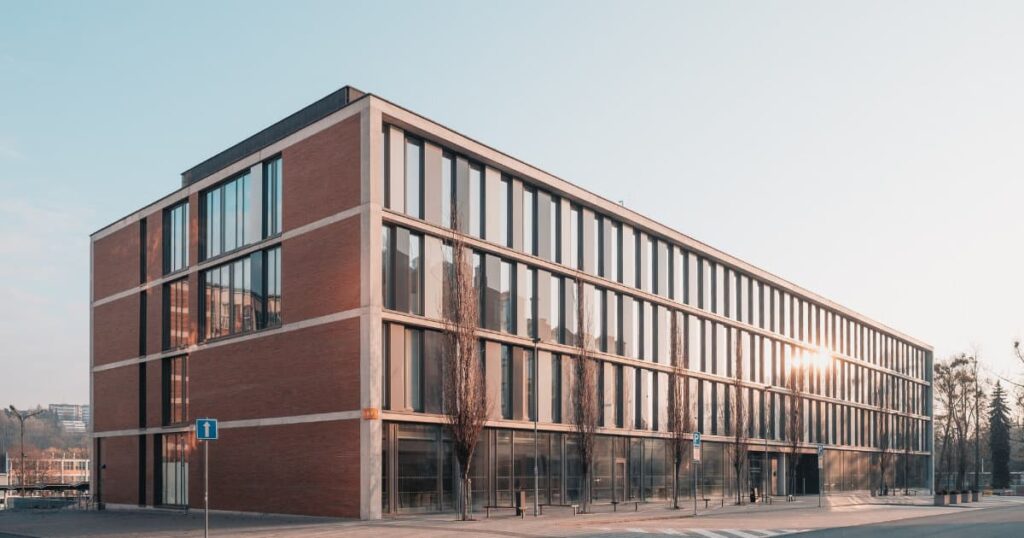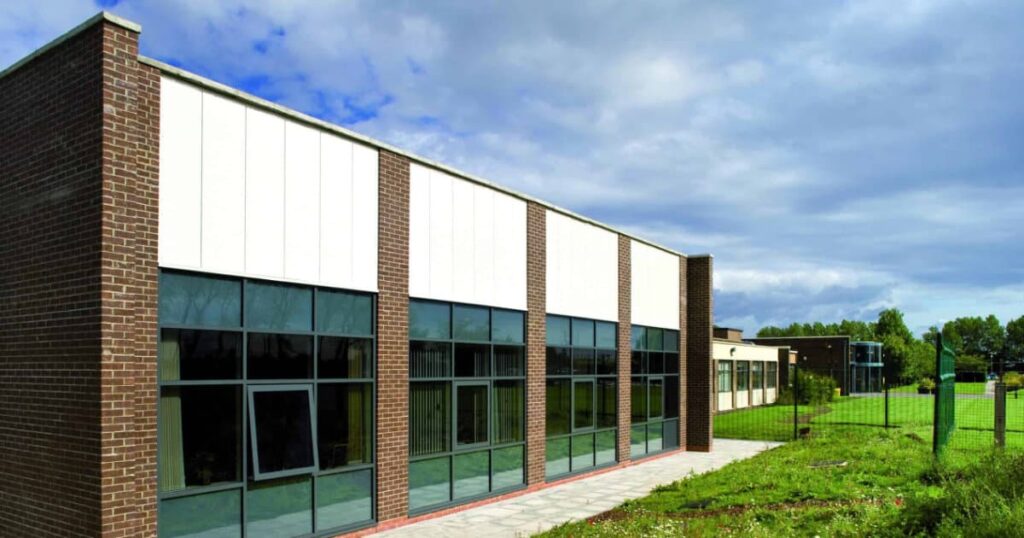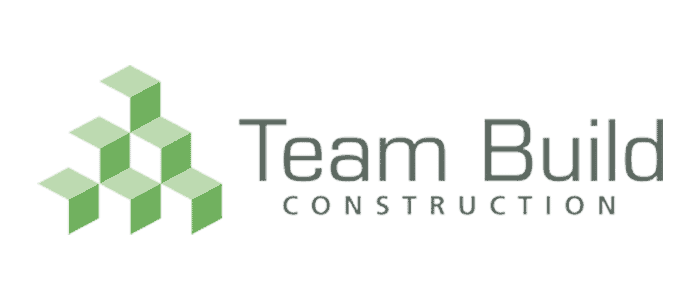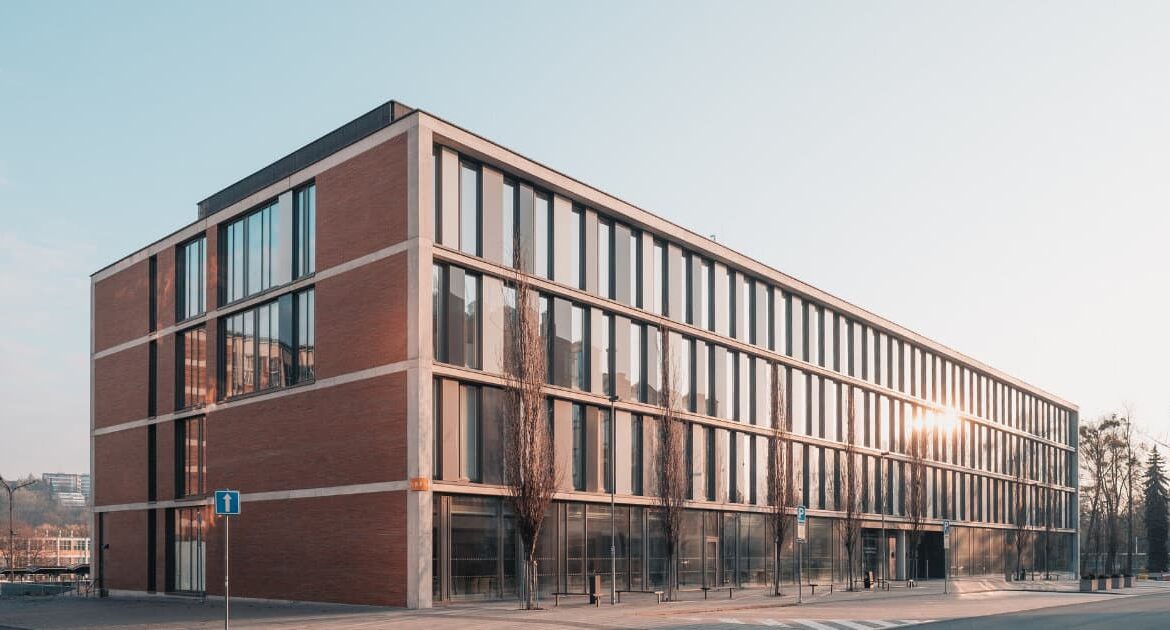
Think about the last store or office building, warehouse or shopping mall that you saw and that had been recently built. Did you notice its roof?
Chances are that it will have had a flat roof, as is the case with so many commercial building projects built for modern purposes – but why is that? And what are the benefits of a flat roof in comparison to the slanted roofs of traditional homes?
How do flat roofs work?
Before we dive into the benefits of flat roofs for commercial organisations and businesses, it first pays to understand how a flat roof works. From movies to endless television series, using the roof for events and storage is a common trait that many commercial and industrial buildings share – and that makes up one of the main reasons why flat roofs are so popular.
The versatility of a flat roof means that it literally becomes another completely level for your usage – and it works by implementing a very slight slope into the construction to ensure that water doesn’t collect in pools on the roof and cause lasting damage to the integral structure of the building. The materials used are generally easy to source and relatively inexpensive to purchase, and that leads us nicely into the benefits for users and building owners themselves.
So, why are flat roofs so popular for commercial buildings?
The benefits of flat roofs for commercial businesses

First and foremost, a flat roof is a versatile roofing solution which opens the roof out into a space which can actually be used by a business or organisation – whether that be as a usable and accessible space, for storage, to hold ventilation equipment safely, or to hold something as innovative and exciting as a swimming pool.
Think for a moment about all the different ways in which flat roofs are converted for modern businesses. Hotels offer rooftop bars, stores introduce exclusive launch events from their rooftop venues, office buildings present colleagues with the added bonus of a rooftop gym or swimming pool. The options for ways of using a flat roof are endless – and they’re all made possible by the following benefits…
- Flat roofs are very easy to maintain and keep in good condition – and if repairs need to be made, a flat roof is much easier to work on and fix.
- With modern technology looking more towards solar power and energy than ever before flat roofs offer a perfect location to store and securely house rows of solar panels.
- The raw materials are cost effective to source and use and boast high durability and a long lifespan – making a flat roof a safe investment for years of use.
- They look neat and tidy and fit into a modern landscape.
All of these benefits hint at why flat roofs are a popular choice for many commercial new build projects, but with every advantage comes something to consider and think about if you’re keen on integrating a flat roof into your own commercial space or building.
The disadvantages to be aware of
While we have touched on the build quality of flat roofs and the purpose behind the slight tilt to their structure to support drainage, drainage and water collection can still be a big issue when it comes to flat roofs – with the lack of drainpipes meaning that water can’t run away from the building very easily. If left unattended, this can lead to flooding inside the building, so those building with flat roofs need proper maintenance and regular checks to ensure that the roof is free from water build up.
In a similar vein, without proper attention and regular checks, waste and debris can also collect on a flat roof – particularly if your building is close to trees. This is exacerbated by the lack of consistent running water away from the roof.
And finally, while flat roofs are versatile and offer a wide array of possibilities in terms of their usage, they can often result in a colder building due to a lack of insulated air between the roof and the rest of the building. This may not be a huge problem with modern heating systems and the commercial usage of the building rather than as a residential space, however it is worth noting as a disadvantage which can lead to higher heating bills in the long run.
Need advice on installing, maintaining or caring for a flat roof? Our team are happy to help!

